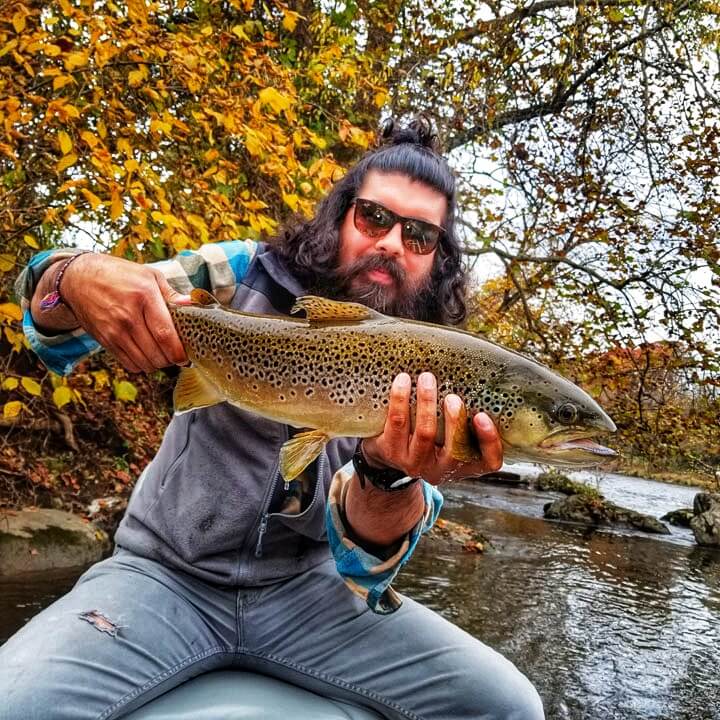Learn to Set the Hook Fly Fishing for Trout
Learn to set the hook fly fishing for trout correctly will directly increase your numbers of fish to the net. In a sport full of prideful anglers it is rare that we see folks perfect this simple task on the stream. There is a perception with the majority of anglers that the rod is set vertically with a quick jerk of the wrist. After a quick Google search on this subject, this same vertical technique repeated over and over from various internet sources. This type of hook set tends to lead to the lowest percentage of hookups in trout fishing! Very difficult to protect fine tippets as well because it becomes difficult to control when the wrist jerks vertical for rod sets. Both line and rod hand have duties for a high percentage hook set.
One of the problems in America with the “Wally World” approach to fly fishing is that it revolves with a retail twist most of the time. One of the biggest challenges to new fly fishers will be to filter through the mass amount of educational information and grab what works and disregard the falsehoods. Your journey in doing this is always evolving as you learn new things. There really never is a pinnacle because you will keep learning new things during the fly fishing journey.
Downstream Hooksets
In most circumstances, the rod hand duty should set the rod to the downstream direction with the rod tip remaining low to the water’s surface. Think of this move being powered from the elbow and not the wrist. The wrist is oftentimes too quick and as a result, the tip jumps opposite of the direction you want it to go! The faster you set the further in the opposite direction the tip travels! As a result, by the time it changes direction to where you want the hook set it becomes difficult to control the amount of force.
Most of the energy set in the vertical plane is spent on breaking the tension of the line on the surface of the water. This puts minimal pressure on actually setting the hook! Often times on guide trips the first fish to the net are the ones that finally get a rod set to the downstream direction. “Set the rod downstream” gets repeated like an old 33 record with a skip in it on most days guiding.
Results for kids striking low and downstream for hook sets!
The line hand duties can facilitate better hook sets on the stream. If you pinch the fly line with the rod hand against the cork and learn to pull from above the rod hand you will learn to get a double advantage. This animated video of the vector pull technique can be found by clicking on it. This type of line control is my preferred method for most examples on the stream. It eliminates the dreaded break-offs during the action of the hook set. Once the rod has a nice bend, it becomes simple to keep a bit of constant line tension.
Keep the Rod Bent!
One of the most common mistakes is to let the rod straighten when folks fumble for their net. The shoulder dips often when reaching for their net which causes the rod tip to straighten up. When getting ready to net a fish make sure you maintain a bent rod in the C position! You will rarely ever drop fish by keeping a nice bend in the rod at all times. Learn the “give and take” of playing fish on the water. You will get better at hook sets and be playing fish over time by learning from your mistakes.
Low side to side pressure brings the trout to the net in a hurry which ensures a quick landing. This, in turn, assists in helping to prevent the build-up of lactic acid so the trout may fight another day. This short piece has been on my radar for quite some time because it is not the norm. Learn to play fish quickly and learn to pressure to the max when it is justified. Learn to pressure trout on light tippet! Try to avoid holding the rod straight up in the air for long periods of time. The position puts minimal pressure on the fish! Happy fishing and tight lines!

